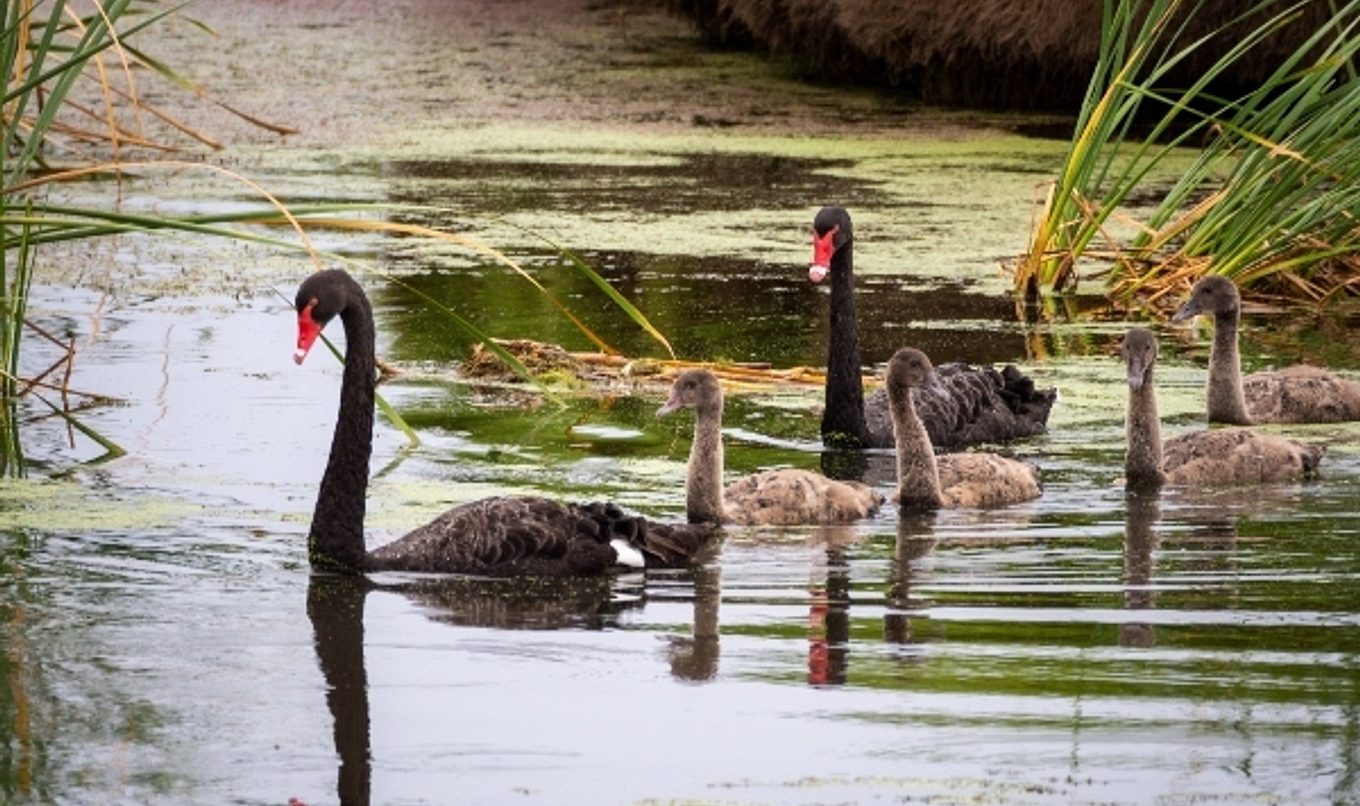River Murray flows deliver breeding success for Coorong black swans
In further evidence of improved conditions in the Lower Lakes and Coorong, researchers and the community have observed a significant increase in the local black swan population thanks largely to increased River Murray flows.

Locals have reported hundreds of cygnets in the area during an extended breeding season from winter through to summer.
Program Leader Coorong, Lower Lakes and Murray Mouth with the Department for Environment and Water, Adrienne Rumbelow explained that over the last eight months, large volumes of freshwater from the River Murray, supplemented with water for the environment, has helped to raise water levels in both the Lower Lakes and Coorong.
“Black swans feed primarily on water plants in the Lower Lakes and Coorong and the raised water levels have led to increased growth of water plants such as Ruppia tuberosa and other similar aquatic species,” Adrienne said.
“In turn, this has increased the available plant food for waterbirds like black swans – contributing to the larger numbers of cygnets in the area.”
Sally Grundy from Mundoo Island Station said she’d witnessed an incredible resurgence of black swan numbers in the Coorong estuary over summer.
“I’ve not witnessed these numbers of swans in years and it’s been truly amazing to see the number of cygnets hatched throughout the season,” Sally said.
“I saw our first cygnets in August last year and more are still hatching now. Some of the clutches have as many as seven cygnets and the majority have survived and now developing their adult plumage.
“A seven month breeding season for swans in the Coorong is extraordinary and super exciting and it’s a good indication that the freshwater flows are having a beneficial impact on the environment.”
Adrienne said the local Ngarrindjeri people support actions to facilitate waterbird breeding.
Rick Hartman, Yarluwar-Ruwe Project Coordinator from the Ngarrindjeri Aboriginal Corporation said the increased numbers of Kungari (black swan) cygnets in the Lower Lakes and Coorong is very pleasing to see.
“Water birds such as the Kungari are important to Ngarrindjeri, not only because they are a Ngartji (totemic species) but the Kungari eggs are a food source for people and are a significant part of Ngarrindjeri culture,” Rick said.
“It shows how Ruwe (Country) can respond with some additional water. This is a place of creation, where the fresh and salt water mix and our Ngartjis need these waters to heal to enable their breeding.”
Complementing local resident observations, researchers from The University of Adelaide have recently completed the annual summer waterbird census, with results due later in the year.
Monitoring associated with this project was delivered by The Living Murray, a joint initiative funded by the New South Wales, Victorian, South Australian and Commonwealth Governments, coordinated by the Murray–Darling Basin Authority.

